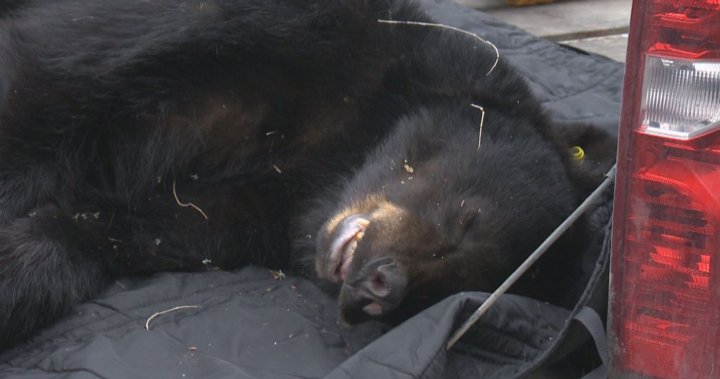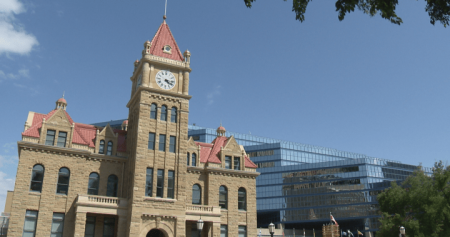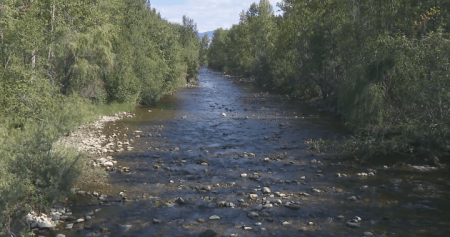A young black bear in downtown Kelowna was recently tranquilized and will be relocated after being ear-tagged. The bear, estimated to be four to five years old and weighing 250 pounds, was tranquilized with two darts while up in a tree near the former McDonald’s restaurant close to the W.R. Bennett Bridge. Conservation officers took action after multiple sightings of the bear in the hospital area were reported in the past week. Ken Owens of the Conservation Officer Service emphasized the importance of keeping the bear alive, calling the situation an “extremely rare” survival incident. The public is encouraged to report any wildlife sightings in urban areas to the province’s Report All Poachers and Polluters line or website. WildSafe BC also provides information on bear sightings and offers prevention education to ensure the safety of both humans and bears.
Owens stressed the need for people to change their habits, particularly when it comes to leaving garbage bins out overnight. He mentioned that the presence of easily accessible food rewards for bears can lead to them returning to urban areas. Owens highlighted the need for collective behavioral changes in the community to prevent bears from being attracted to city streets. He warned that if the bear returns to the downtown area, it may have to be euthanized, which is a difficult decision for conservation officers to make. Owens urged local residents to secure their garbage properly and use bear-resistant garbage cans to reduce the risk of attracting wildlife. By working together to change behaviors and protect both wildlife and property, everyone can benefit from a safer environment.
The Conservation Officer Service faces the challenge of dealing with wildlife intrusions in urban areas more frequently than people may realize. Owens emphasized the importance of community cooperation in protecting both wildlife and humans from potential conflicts. Implementing strategies such as using bear-resistant garbage cans and properly managing food waste can help reduce the likelihood of bears being attracted to populated areas. Owens acknowledged that euthanizing animals is a tough aspect of their job, but it becomes necessary when public safety is at risk. Encouraging a greater awareness of wildlife preservation and fostering responsible behavior among residents are key steps in creating a harmonious relationship between humans and wildlife in urban environments.
The presence of wildlife, including bears, in Kelowna highlights the need for ongoing conservation efforts and public awareness. Residents are reminded to be vigilant and report any wildlife sightings to the appropriate authorities to ensure the safety of both animals and the community. Conservation officers are committed to protecting wildlife and minimizing human-wildlife conflicts through relocation and prevention strategies. By working together to implement sustainable practices and maintain a respectful coexistence with wildlife, communities can create a safer environment for both humans and animals. The importance of responsible behavior, such as securing garbage and avoiding food rewards for wildlife, cannot be understated in preserving the natural habitat and ensuring the well-being of all species living in urban areas. Collaboration between authorities, organizations, and the public is essential in safeguarding wildlife and fostering a balanced ecosystem for future generations.













